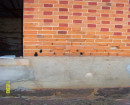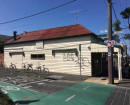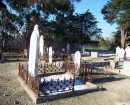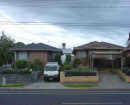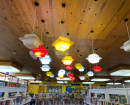GILWELL PARK SCOUT CAMP & LANDSCAPING
Gembrook Launching Place Road GEMBROOK, Cardinia Shire
-
Add to tour
You must log in to do that.
-
Share
-
Shortlist place
You must log in to do that.
- Download report
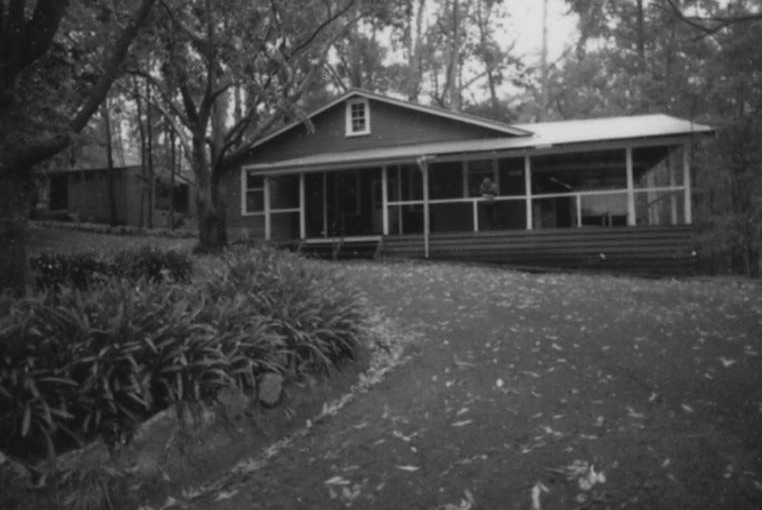

Statement of Significance
Gilwell Park Scout Camp, founded in 1926 and based on Gilwell Park in England, is of significance to the Cardinia Shire, the State and probably Australia, as an early, extensive and important scout training and recreational complex. The notable early elements in the complex include the Russell Troop Room (remodelled 1978); the former Hoadley house, later The Lodge (remodelled 1978); the hospital, former Frankston World Jamboree building; the associated ranger's house; the 1934 open-air chapel; and an oak planted by Lord Baden-Powell in 1931. There is also a number of other notable plantings and memorial gateways (i.e. Somers Walk).
The place is significant also for its associations with its founders, EHC (Tom) Russell of Swallowfield and CA Hoadley, Footscray scoutmaster, adventurer, headmaster and son of the founder of Hoadley's chocolates. Both donated land to the Gembrook Camp in 1926. Other associations lie with the noted garden designer, Matthews and the stonemason.
State Significance
-
-
GILWELL PARK SCOUT CAMP & LANDSCAPING - Physical Description 1
This is a large complex set in native forest but with many formal plantings, stone gateways and timber (often stained) or cream brick clad clubrooms, a hall, chapels, huts, hostels and houses. The original design emphasis within the complex was on rusticity or architecture related to the natural environs but later 1950s Modernist designs introduced the use of cream brickwork which unlike its timber predecessor, did not blend with the bushland, and a more urban character unrelated to the original bush haven concept. The major designers involved included the landscaper, David Matthews, the architect LM Perrott, and the Footscray stonemason James Thompson.
Notable early buildings and planting and the most important contributing elements in the complex include: * Russell Troop Hall or Room (interior and exterior, with Hoadley memorabilia such as the 1911 Douglas Mawson expedition sled and skis) and surrounding planting, parade ground and stone gateways, an oak (planted by Lord Baden-Powell in front of the Hall in 1931); * Hoadley's The Lodge (interior and exterior) and surrounding parkland including avenue planting such as Sycamore Drive and large specimen trees (Monterey pine, mountain ash), presumably created by Matthews; * Hospital, former Frankston World Jamboree building; * 1934 open air chapel on Clarke Creek, gateway, altar, walls and planting, including the holly around the altar; * totem pole, thought carved in the 1920s and renewed since; * Lord Somer's walk stone gateway and avenue planting; and * the generally symbolic (altered, rebuilt) small gabled timber huts or kitchens at the former Cuckoo Patrol Site * Contributory buildings to the post WW2 phase in the complex (1950s, 1960s Perrott designs) include: * Our Lady of the Scouts Chapel, a Roman Catholic Chapel, (cream brick 1956); * the notable Hoadley Memorial Hall,(a cream brick building, 1955, designer L.M. Perrott); * Ladies' Hostel, (cream brick); the cottage (in cream brick, designed by Perrott, 1960); * four new cream brick buildings (1963); * the Angus Mitchell Memorial Huts, (cream brick, replaced the original sleeping huts built by Russell, 1963); * Fritz de Molnar Memorial Hall, (dedicated to the International Commissioner of Hungary who provided funding, 1963 designed by Perrott) A later phase: * W.D. Kennedy Memorial Chapel (1972); * Russell Troop Room (in the training ground, remodelled 1978), * The Lodge (remodelled in 1978, 1995); * native trees and shrubs (planted by the Blackburn Tree Preservation Society, 1970s); * Delacombe Hall (1974), architect Dudley Wilson * Spring Lodge (1983), named after Dr. Don Spring, architect Dudley Wilson; * EM Derrick Centre (1978), with the Cleve Cole Hut as the Leader's hut; and * First Gembrook Scout Hall (1991) There are many commemorative plaques and associated formal plantings, making the park historically notable to the scout movement in Australia and the often prominent individuals who served there.
Notable planting includes: golden cypress hedge, liquidambar, Pseudotsuga menziesii (Douglas fir), oaks, Cedrus deodara (deodar cedar, two at the start of Somers Walk), an Abies sp. (row, Somers Walk) and, around the Lodge, mature Magnolia grandiflora and large Rhododendron var. in the lawn nearby. There are also commemorative plantings carried out by the East Melbourne troop.
GILWELL PARK SCOUT CAMP & LANDSCAPING - Physical Conditions
Given the various reconstruction stages the various buildings and structures are in good condition.
GILWELL PARK SCOUT CAMP & LANDSCAPING - Historical Australian Themes
Themes
7.3 Outdoor sports (football, cricket, horse racing, hunting, car racing, rifle shooting, fishing),
7.7 Retreats (religious retreats, inebriate retreats, sanatoriums)
11. Evidence of: Life style, housing and landscape choice of notable figures residing in the district
GILWELL PARK SCOUT CAMP & LANDSCAPING - Physical Description 2
Associations - Russell, E.H.C.; Hoadley, C.A.
Heritage Study and Grading
Cardinia - Cardinia Shire Heritage Study 1996
Author: Graeme Butler & Associates
Year: 1996
Grading: Local
-
-
-
-
-
GILWELL PARK SCOUT CAMP & LANDSCAPING
 Cardinia Shire
Cardinia Shire
-
'YARROLA'
 Boroondara City
Boroondara City -
1 Bradford Avenue
 Boroondara City
Boroondara City
-
-




